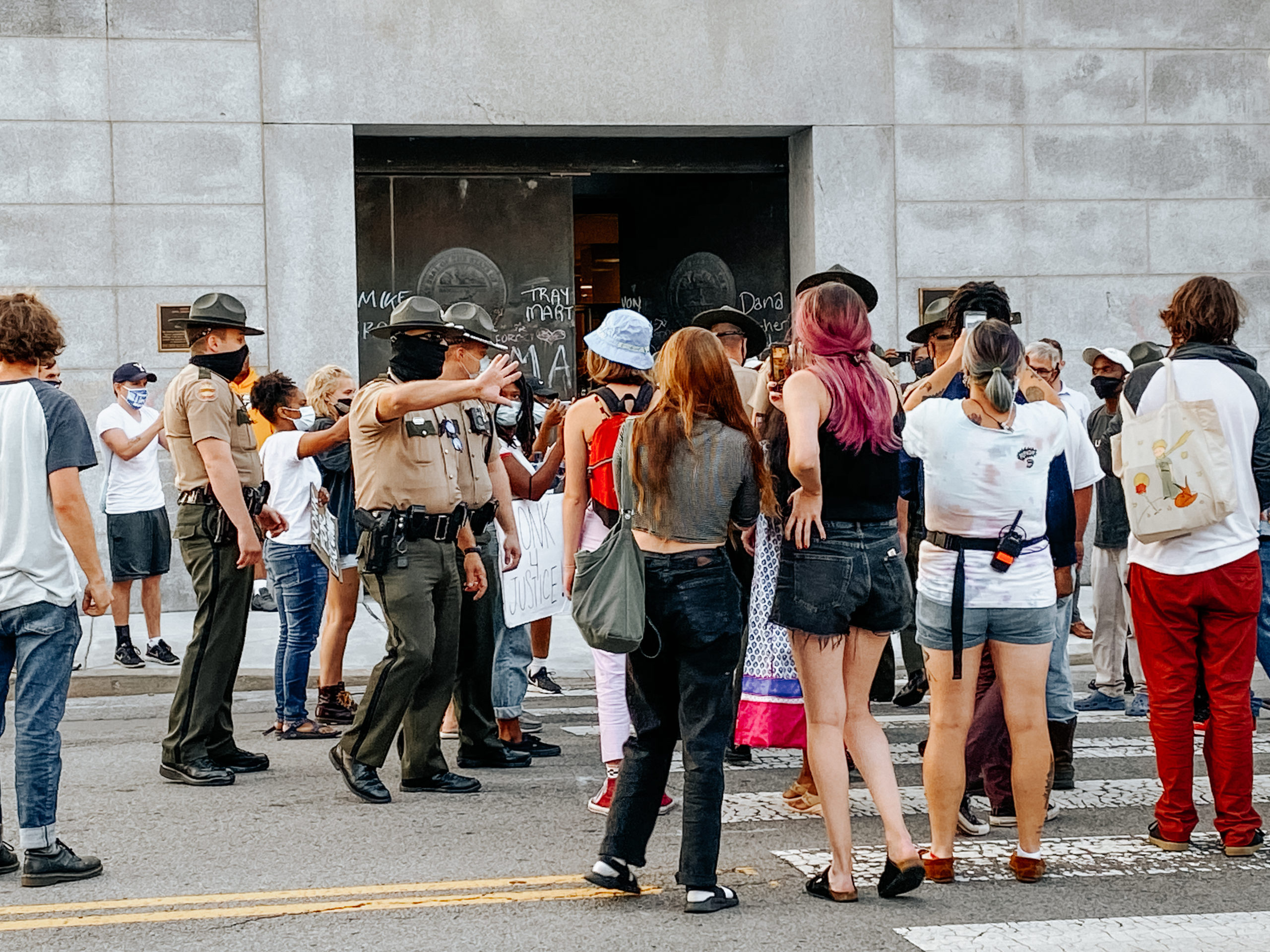You may not know this, but if you have participated in a march, boycotted a company’s products, or walked out of your job on strike, you have engaged in civil resistance.
Civil resistance is a powerful form of nonviolent action which seeks to change oppressive systems in society. Conceptualized originally by Indian activist Mahatma Gandhi to teach his strategy of nonviolent resistance, the U.S. civil rights movement is perhaps the most visible example of civil resistance for many today. At its most basic level, civil resistance means disrupting business as usual to force institutions in power to change their practices. You already know many of the strategies that practitioners of civil resistance use to achieve this goal, but why should activists adopt the term in their work?
Why Civil Resistance?
In their recent book on the subject, Prof. Erica Chenoweth defines civil resistance as “a form of collective action that seeks to affect the political, social, or economic status quo without using violence or the threat of violence against people to do so.” Nonviolence is baked into the heart of civil resistance. Whether civil resistance activists seek to dismantle racist institutions or to reform unfair labor practices, they develop nonviolent strategies for their goals.
Encouragingly, these nonviolent strategies work.
Chenoweth and their coauthor Prof. Maria Stephan found that as many as 53 percent of nonviolent resistance campaigns achieve their goals, whereas violent campaigns are only successful 25 percent of the time. Why is there such a divide in efficacy? Although many factors influence success, including available resources, variation in movement goals, and the kind of environment in which activists organize, public opinion is a central axis for civil resistance.
While armed resistance movements can effectively threaten the institutions that oppose meaningful change via violence, civil resistance adopts a different approach. Through nonviolent strategies, organizers can win over the hearts and minds of the masses. Sustained nonviolent resistance imposes high economic and reputational costs to maintaining oppressive systems. These costs begin to outweigh the benefits of continued oppression. With a strong combination of social, political, and economic pressure through nonviolent strategies, civil resistance campaigns force oppressive institutions to overhaul their policies.
Civil Resistance Strategies
Civil resistance requires many diverse tactics to enact meaningful change. Diversification of strategies across social, economic, and political spheres creates the necessary pressure to disrupt the status quo.
Social strategies can include individual actions — such as hunger strikes — or more community-based actions — such as mass rallies and protests. Social strategies of civil resistance work by calling attention to the goals of a movement with high levels of visibility. In contrast, economic strategies of resistance receive lower levels of visibility while aiming to ‘hit ‘em where it hurts.’ Through refusals to pay taxes, consumer boycotts, and labor strikes, individuals can economically threaten oppressive institutions.
Political civil resistance relies upon organized disruption as a central tenet of action. These strategies can include voter-led boycotts of elections or candidates and officials withdrawing from political office. By refusing to participate in the political process, voters and politicians powerfully signal that these political institutions are illegitimate — serving to publicize the aims of the movement and to damage the reputation of these institutions. Political strategies can reduce faith in institutions both domestically and abroad, serving as a further way to solidify public opinion on the side of the civil resistance movement. In tandem, these diversified strategies make oppressive institutions too costly to maintain, ushering in essential changes to ensure greater opportunities for justice.
Civil Resistance Movements
While many notable social justice movements adopt nonviolent resistance strategies, these actions alone are insufficient for the title of ‘civil resistance movement.’ To become an effective civil resistance campaign, organizers must incorporate a diversified portfolio of nonviolent strategies which build upon each other to achieve a meaningful goal.
Take the example of the U.S. Civil Rights Movement of the 1960s. In addition to the highly visible social protests synonymous with the movement, leaders of the movement strategized to launch a powerful multi-front opposition to racist legal, social, and political structures throughout the nation. Rev. James Lawson taught activists to withstand violence and insults hurled at them during lunch counter sit-ins in Nashville, while Ella Baker formed the Student Nonviolent Coordinating Committee to enable young activists to organize themselves around economic and political strategies of resistance. Many other recognizable figures helped turn this movement into one of the most visible representations of civil resistance in history.
Present day social justice movements should examine the lessons of civil resistance movements when planning their own strategies of resistance. With contemporary movements working to redress legacies of colonialism, reform broken policing institutions, restore environmental protections, and otherwise generate massive change, civil resistance offers essential insights for activists to consider today.
Check out Prof. Chenoweth and Prof. Stephan’s books:
Chenoweth, Erica. 2021. Civil Resistance: What Everyone Needs to Know. Oxford, UK: Oxford University Press.
Chenoweth, Erica, and Maria J. Stephan. 2015. Why Civil Resistance Works: The Strategic Logic of Nonviolent Conflict. New York City, NY: Columbia University Press.
- State of the UNIONS: Welcome to September’s Impactfull Series - September 2, 2022
- What We Can Learn from the Ukrainian Refugee Crisis - March 29, 2022
- The Olympic Effect: Changes in Host Communities - February 21, 2022
